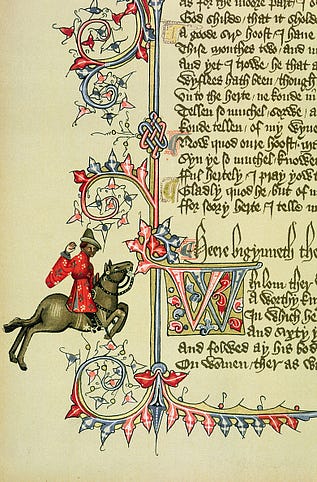|
 |
The Writer's Almanac from Wednesday, April 17, 2013
"Paper-White Narcissus" by Lisel Mueller, from Alive Together. © Louisiana State University Press, 1996.
ORIGINAL TEXT AND AUDIO - 2013
It's the birthday of Irish poet Brendan Kennelly, born in Ballylongford, County Kerry (1936). He's a literature professor at Trinity College in Dublin, and a very popular poet — he has published more than 20 books of poems. He said, "To be born in Ireland is to inherit not only one of the most beautiful little countries in the world, but also an entire legacy of prejudices, hatreds, clichés, and an impressive supply of apparently invincible ignorance." One of his best-known works is Cromwell (1983), a book-length poem about the English leader who invaded Ireland in the mid-1600s and sought to wipe-out Catholicism. Another of his books is The Book of Judas (1991), a 400-page epic poem from Judas's point of view. He said: "Poetry is, above all, a singing art of natural and magical connection because, though it is born out of one's person's solitude, it has the ability to reach out and touch in a humane and warmly illuminating way the solitude, even the loneliness, of others. That is why, to me, poetry is one of the most vital treasures that humanity possesses; it is a bridge between separated souls."
It's the birthday of Isak Dinesen, born Karen Dinesen on a rural estate called Rungsted near Copenhagen, Denmark (1885). She came from a wealthy family of landowners and writers. As a girl, she loved listening to stories about Danish mythology. She started writing at an early age, and one of the first stories she published was about a woman who has a love affair with a ghost.
She and her husband then moved to Kenya, where they started a coffee plantation. She fell in love with Africa, and she said, "The grass was me, and the air, the distant visible mountains were me, the tired oxen were me." But she and her husband separated in 1925. Alone and unhappy on the coffee plantation, she said, "I began in the evenings to write stories, fairy-tales and romances, that would take my mind a long way off, to other countries and times." After a swarm of locusts and a drought, she finally had to sell the farm to a local developer.
But just as she was leaving Africa for good, Dinesen sent some of her stories to a publisher, and they were published as the collection Seven Gothic Tales (1934). The book was full of wild, magical stories about such things as a group of people telling jokes while trying to survive a flood, and a woman who exchanges her soul with an ape. Dinesen wrote, "Truth is for tailors and shoemakers. ... I, on the contrary, have always held that the Lord has a penchant for masquerades."
According to legend, it was on this day in 1397 that Geoffrey Chaucer recited The Canterbury Tales to the court of Richard II. Although there is no evidence that this actually happened, it is easy to imagine the scene, in part because of a famous painting of Chaucer reciting his poetry to the court, painted in the early 15th century. The prologue of Canterbury Tales opens with the famous lines:
Whan that Aprill, with his shoures soote
The droghte of March hath perced to the roote
And bathed every veyne in swich licour,
Of which vertu engendred is the flour;
Whan Zephirus eek with his sweete breeth
Inspired hath in every holt and heeth
The tendre croppes, and the yonge sonne
Hath in the Ram his halfe cours yronne,
And smale foweles maken melodye,
That slepen al the nyght with open eye-
(So priketh hem Nature in hir corages);
Thanne longen folk to goon on pilgrimages
And palmeres for to seken straunge strondes
To ferne halwes, kowthein sondry londes;
And specially from every shires ende
Of Engelond, to Caunterbury they wende,
The hooly blisful martir for to seke
That hem hath holpen, whan that they were seeke.
The Prologue to the Canterbury Tales is one of the most famous examples of Middle English. Translated into modern English, it's something like:
When April with his showers sweet with fruit
The drought of March has pierced unto the root
And bathed each vein with liquor that has power
To generate therein and sire the flower;
When Zephyr also has, with his sweet breath,
Quickened again, in every holt and heath,
The tender shoots and buds, and the young sun
Into the Ram one half his course has run,
And many little birds make melody
That sleep through all the night with open eye
(So Nature pricks them on to ramp and rage)
Then do folk long to go on pilgrimage,
And palmers to go seeking out strange strands,
To distant shrines well known in sundry lands.
And specially from every shire's end
Of England they to Canterbury wend,
The holy blessed martyr there to seek
Who helped them when they lay so ill and weak.
Be well, do good work, and keep in touch.®
Good Poems - softcover
Celebrate Poetry Month with this collection! This anthology contains classic and contemporary poems selected and introduced by Keillor.
If you are a paid subscriber to The Writer's Almanac with Garrison Keillor, thank you! Your financial support is used to maintain these newsletters, websites, and archive. If you’re not yet a paid subscriber and would like to become one, support can be made through our garrisonkeillor.com store, by check to Prairie Home Productions, P.O. Box 2090, Minneapolis, MN 55402, or by clicking the SUBSCRIBE button. This financial support is not tax deductible.


